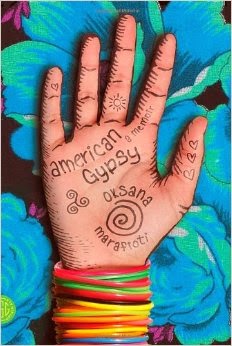Some of the best books of the year have been from favorite authors - Sue Monk Kidd's The Invention of Wings about the first women abolitionists, Susan Vreeland's Luncheon of the Boating Party about Renoir's painting, which I got to see weeks after finishing the book, and Elizabeth Gilbert's Signature of all Things about early botanists, especially a woman botonist. Jim Fergus had a great book about white women sent off to marry Cherokee men in One Thousand White Women. The funniest book I read was The 100 Year Old Man Who Climbed out of the Window and Diappeared by Swede Jonas Jonasson. I started handing that book out as soon as I had finished it. I also really liked autobiographical American Gypsy by Oksana Marafioti, a gypsy born in Latvia that I met at a conference.
I found a new author and series to like - Robert Galbraith's Cormarant Strike books Cuckoo's Calling and Silkworm. I read one more book from Baldacci, Flynn and Silva. I also finished off Deborah Harkness' trilogy with Book of Life, and though I don't usually like vampire stories, this one in combination with a smart witch who uses libraries a lot, had me hooked. I read all of the Inn Boonesboro trilogy from Nora Roberts, as well as some of her old stuff.
I seemed to go retro this year - partially because as I clean out parts of my house I am finding old books I liked, partially going back to reread books or picking up ones I meant to read. This ranged from erotica from Anias Nin and D.H. Lawrence (very mild) to various science fiction, especially enjoying Heinlein's Stranger in a Strange Land over a long drive to Texas.
I read some powerful non-fiction too, such as On Killing by Dave Grossman and Grace and Grit by Lilly Ledbetter, who's fight for equal pay resulted in the Lilly Ledbetter Fair Pay Restoration Act.
I am surrounded by books I "should read," but there is only so much time, and I feel I actually get through quite a bit with the help of audio books. I read and listen to books for my pleasure, and to learn about some part of the world, some historical period, some group of people, or even just to think about alternative possibilities in a good story. Thank you dear writers for teaching and entertaining me.







































